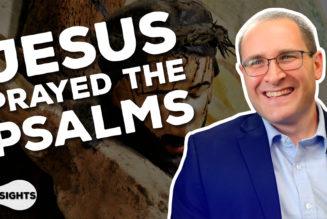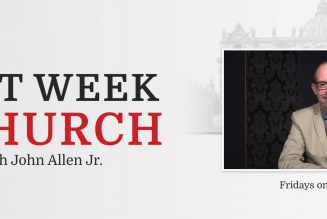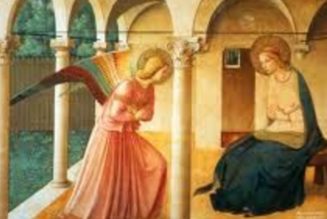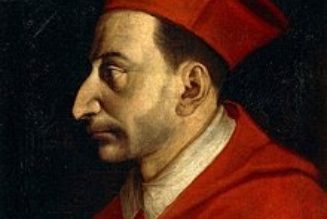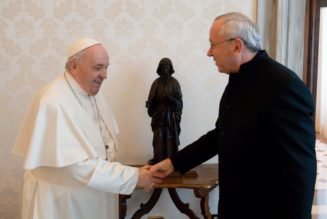
The traditional Lenten practices of intensified prayer, fasting, and almsgiving are spiritual disciplines to be followed along the six-week pilgrimage from Ash Wednesday to the Easter Triduum. As I suggested in Roman Pilgrimage: The Station Churches, that journey can be lived as a kind of annual catechumenate-for-the-already-baptized, in which we join the catechumens — who will be baptized at the Easter Vigil or received into full communion with the Catholic Church — in a deep-dive examination of conscience and a more thorough reflection on baptism as the font of Christian vocation.
Having literary companions along the Lenten journey can help us live those traditional practices more intensely. Spiritual reading comes in many forms, pre-eminent among them the Holy Scriptures.
In its Lenten daily prayer, the Liturgy of the Hours, the Church reads from the Book of Exodus and the Letter to the Hebrews; those who don’t pray the Divine Office might prioritize those biblical texts in their Lenten spiritual reading. Then there are the three great catechetical gospels by which the catechumens of early Christianity completed their preparation for baptism: Jesus and the woman at the well (John 4:5-42, lyrically explained in the Catechism of the Catholic Church, #2559-2561); the cure of the man born blind (John 9:1-41); and the raising of Lazarus (John 11:1-45). The always-insightful homilies and reflections of Bishop Erik Varden, OCSO, posted on his website, Coram Fratribus (Face to Face with My Brethren), will enhance anyone’s Lenten biblical readings; so will the commentaries in the Word on Fire Bible.
Dante Alighieri, the greatest of Christian poets, is a noble Lenten literary companion, especially in the Purgatorio, the second “volume” of the Divine Comedy — an extended meditation on purification from sin and growth into the life of grace. Dante beginners will want to use Anthony Esolen’s fine translation: The theologically inclined will appreciate the insightful notes in the Dorothy L. Sayers translation.
Paul Horgan was the most distinguished Catholic man of letters in mid-20th century America. Things As They Are, the first volume of Horgan’s Richard Trilogy, is arguably the best American novel about a boy growing up since Huckleberry Finn and makes good Lenten reading as the protagonist struggles with various of the seven deadly sins. Horgan never wore his Catholicism on his literary sleeve, but his profoundly sacramental vision of the human condition is especially evident in Things As They Are: for in learning to see reality square-on, we learn to appreciate the supernatural reality that is just on the far side of what seems ordinary.
A similar sensibility, and a similar literary structure, infuse Willa Cather’s masterpiece, Death Comes for the Archbishop: a fictional recreation of the life and adventures of the first archbishop of Santa Fe and a moving tale of vocational living for the cause of Christ.
In Evelyn Waugh’s experimental novel, Helena, the mother of the emperor Constantine sometimes talks like a flapper in 1920s London, while her father (King Cole) anticipates the brilliantly crusty Leo McKern in Rumpole of the Bailey. Beneath the Wavian humor, however, is another literary reflection on the drama of vocation: the life-long project of discerning what God is asking of us now, and then configuring our lives to that summons. The final sections paint a striking portrait of fourth-century Jerusalem.
– Advertisement –
Science fiction offers more Lenten literary companionship. Those whose tastes incline in that direction will immediately turn to C.S. Lewis’s Perelandra and its striking re-telling of the temptation in Genesis 3. I also think of Walter M. Miller, Jr.’s, tale, A Canticle for Leibowitz, with its Augustinian sense of the enduring effects of original sin on a humanity constantly tempted to substitute its judgment for God’s.
Jesus of Nazareth: Holy Week – From the Entrance into Jerusalem to the Resurrection, by Joseph Ratzinger/Pope Benedict XVI can be read bit-by-bit throughout Lent, as a daily meditation on the ultimate drama: the salvific passion, death, resurrection and ascension of Jesus Christ. Anglican scholar and preacher Fleming Rutledge offers a more challenging, but ultimately rewarding, Lenten read with The Crucifixion – Understanding the Death of Jesus.
And if I may return to Roman Pilgrimage: The Station Churches: I am far more a book reader than a Kindle reader, but in this case I am happy to recommend the Kindle edition of my Lenten walk through Rome with art historian Elizabeth Lev and my photographer son, Stephen. For in the electronic Roman Pilgrimage, all of Stephen’s magnificent photographs are in color, with a zoom-in function that puts you “inside” some of the greatest works of Western art: more companions along the pathways of Lent, brought to life by Professor Lev.
George Weigel is an independent columnist whose weekly column is syndicated by the Archdiocese of Denver. The opinions and viewpoints expressed by Mr. Weigel therein are his alone and do not necessarily reflect those of the Archdiocese of Denver or the bishops of Denver.


